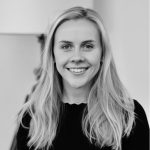Mobile in app payments are the next big development – while they’re not necessarily new and the technology has been around for some time, the rate of adoption for this kind of technology is increasing rapidly. In 2020, the number of users registered for mobile payments had increased by 75%, to over 17 million people in the UK, and the number of mobile payments made continues to rise.
Since the COVID-19 pandemic, we have seen a massive rise in the use of in-app payments and contactless payments on mobile, as it is a convenient and streamlined way to pay – with no buttons to press or exchanging of cash needed, it’s a no-brainer! Now restrictions have lifted, the popularity of mobile payments hasn’t slowed down, and in fact, the number of customers taking advantage of mobile payment methods continues to rise.
Essentially, mobile payment apps let you send and receive money, and make payments using a smartphone, both for online payments and in person payments.
There are a couple of different types of mobile in-app payments:
- Apps like Google Pay and Apple Pay, which allow users to pay for goods and services with a virtual version of their credit or debit card on their phone.
- Wallet apps like PayPal and Paym, which allow users to pay for goods and services with a phone number or email address, rather than using bank details.
In this post, when we talk about mobile in-app payments, we’re generally talking about the first type of payment method!
How does a payment app work?
In the west, the majority of payment apps work by either sending money online, or in the case of B2C transactions, using NFC technology to support a contactless payment method – the same tech that supports standard contactless card payments.
In countries like China and India, the preferred technology for mobile payments is via a QR code or scannable barcode.
Paying with a mobile app like Google Pay or Apple Pay is actually a very similar process to a standard payment method with a credit or debit card, as it uses a virtual card that matches a user’s physical card.
In the UK, paying with mobile in-app payments follows a very similar process to traditional payments with credit cards or debit cards – the only real difference is the start and end-point, as this is where the card is stored and where messages are relayed back to the customer. The process of authorisation, settlement, and funding, is the same as usual.
Regardless of the type of payment app, mobile payment solutions aim to streamline the payment process for users and help them speed through checkout processes, whether in-person or online. This means that merchants can expect higher completion rates and higher customer satisfaction if/when they are able to support payment apps and in-app payments.
Apple Pay
Apple Pay allows users with iPads and iPhones or an Apple Watch to use a native payment option designed specifically for their mobile phone. Apple Pay lets users save credit cards and debit cards to their mobile device, where they are held in a digital wallet. Users can also save some gift cards and store credit cards. This means when you pay through an app like Apple Pay, you’re actually paying with a digital card!
All users need to do to access this form of payment is download the Apple Pay app and enter their card details (which are then securely stored against their Apple ID).
Google Pay
Google Pay is Google’s native answer to similar services like Apple Pay and Samsung Pay (for use on Samsung android devices). Like other payment apps, Google Pay allows users to save their card details to their Google account. Then, the card exists digitally in their supported device and can be used to pay for contactless card transactions and be used for digital payments.
Google Pay can also be used to top up digital wallets like Google Play.
Acquired.com supports payments via Google Pay and Apple Pay, making it easy for our merchants to take online payments and for their customers to pay with their phone both in-person, or online. Once a business is integrated with the Acquired.com API they are easily able to accept payments via Apple Pay & Google Pay, alongside traditional card payments. Both Apple Pay and Google Pay can store credit cards and debit cards from a range of card issuers including Visa, Mastercard and American Express.
Businesses can also integrate Apple Pay and Google Pay into their own consumer payment apps to improve the checkout flow when it comes to making online purchases. For e-commerce businesses, this allows users to make credit card payments quickly and smoothly, without having to switch to another app or find their bank card details in order to pay.
Checkout in apps and allows organisations to keep their entire user-side payment process natively within their app. This same feature can also be added to checkout on websites if there is no app for the business.
Apple Pay and Google Pay can also communicate with online banking and bank apps if additional verification is needed.
The advantages of mobile payment apps
Mobile payment apps are safe, secure and improve the rate of approval for digital transactions, which ultimately improves the bottom line for retailers and organisations. A wide range of merchants can take advantage of mobile in-app payments as part of their overall payments strategy, increasing conversions, customer loyalty and customer experience, and offering increased transparency around individual consumer-to-merchant payments end-to-end.
Easy in-app payment experiences
For an effortless checkout experience, mobile payment apps are one of the best options available to merchants today. They offer users a strong level of consumer protection and make it incredibly simple to share the necessary payment data with merchants.
For users, this equals a quick experience that doesn’t come with frustration or upset, and helps build customer loyalty due to positive checkout processes. This convenient payment method can also encourage users to download a merchant app, opening up new avenues and increased touchpoints for marketing.
Increased security for customers and merchants
As well as an improved customer experience, apps like Google Pay and Apple Pay offer an additional layer of security for online purchases. It may seem that by not using an actual card, this type of payment would be less secure, however this is not the case. The cards in Google and Apple pay wallets are just digital versions of the ‘analog payment cards’, so are still connected to users and their bank accounts in the same way.
When users use an app for payment, all their data is end-to-end encrypted, and remains that way from Google or Apple’s servers all the way through the payment process.
This also means that merchants don’t need to hold card details on file and you can avoid the minefield that is dealing with users’ personal card data. In the event of a data breach, the data merchants need to hold is considerably less sensitive. In addition, all of the cards stored by business payment apps like Google Pay and Apple Pay are checked and verified in advance, reducing the risk of fraudulent payments.
When it comes to SCA and tokenisation, mobile payments also offer an additional layer of verification through biometrics, such as fingerprint or facial recognition. New regulations require online payments to have at least two of the three authentication factors ticked (knowledge, possession and inherence). Inherence is the most secure of the three, and can be passed using biometric technology, something that is made easy using mobile payment wallets. To learn more about SCA and tokenisation for online payments, take a look at our guide to SCA and 3DS2 regulations!
Improved authorisation rates
As we’ve mentioned, the level of security associated with many in app payments offers benefits to both customers and merchants.
All the cards held in Apple and Google Wallets are checked and verified in advance. This means that the chances of a consumer paying with a wallet app of being fraudulent are considerably lower than paying with card details on a website.
By offering mobile payments as a payment method for users, organisations can help improve their authorisation rates and reduce the number of chargebacks or bounced payments they have to deal with.
Detailed customer insights
Mobile in-app payments specifically allow merchants to increase the amount of data they can collect in-house. When users use a merchant’s own app to make payments, there is considerably more data about the user journey that can be used. Integrating mobile payments in your app makes the payment process as smooth as possible, and increases overall satisfaction with the app. This app usage data can be used to make improvements to a buyer journey and to increase loyalty through a smooth user experience.
At Acquired.com, we work with mobile in-app payments every day, and have the extensive experience needed to help our customers understand their payment strategies. To learn more about our Apple Pay and Google Pay integrations, or to speak to a member of our expert payments team, please don’t hesitate to get in touch!







